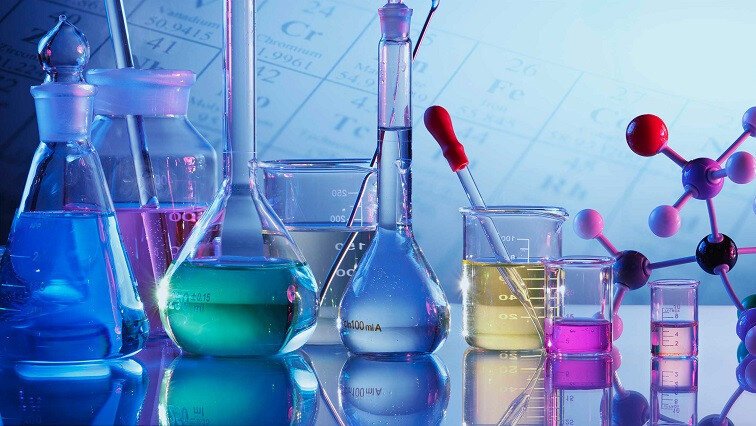
TEHRAN – The ratio of nano-articles to the total number of articles published in Iran is the highest in the world, highlighting the amount of attention and priority given to nano-sciences in the country.
According to StatNano, in 2021, nearly 202,000 nano-articles were issued in JCR- (Journal Citation Reports) indexed journals, accounting for approximately 8.2 percent of the total articles indexed in WoS (Web of Science). Alternatively stated, about 8 percent of all scientific publications across the globe are in the field of nanotechnology.
In terms of the ratio of nano-articles to the total number of articles, Iran still possesses the highest share in this index with 18.7 percent of the total articles falling in the category of nanotechnology.
The country published a total of 11,196 nano-articles in 2021, according to the database.
Saudi Arabia, Egypt, and China followed Iran with 17.4 percent, 16 percent, and 14.1 percent shares of nano-articles to the total number of articles, respectively.
The number of scientific articles is deemed a significant parameter for measuring and comparing the scientific development of individuals, universities, and countries and indicates their scientific efficiency.
More than 42 percent of the world’s nanotechnology publications by 2021 have been written and published by Chinese researchers. The United States, India, and Iran come next with 11.5 percent, 9.4 percent, and 5.5 percent, respectively.
China tops the list with more than 85,700 nano-articles, with around 14 percent of all the Chinese scientific articles falling into this category. Following China, the United States is in second place, having published about 23,200 articles (11.5 percent), while India and Iran would be in the next places with 9.4 percent and 5.5 percent, respectively.
Iran ranked 43rd among the 100 most vibrant clusters of science and technology (S&T) worldwide for the third consecutive year, according to the Global Innovation Index (GII) 2020 report.
The country experienced a three-level improvement compared to 2019.
Sourena Sattari, vice president for science and technology, has said that Iran is playing the leading role in the region in the fields of fintech, ICT, stem cell, aerospace, and is unrivaled in artificial intelligence.
Iran has created centers in six Asian countries for exporting nanotechnology products, including China, India, Indonesia, Syria, Turkey, and Iraq.
Nanotechnology’s trend of development is growing in Iran, as the number of nanoproducts and equipment developed in the previous Iranian calendar year (ended March 20, 2021) increased to 750, compared with 647 a year before.
Some 223 product manufacturing companies and 59 equipment manufacturing companies are active in the field of nanotechnology and by the end of last year, which developed a total of 750 products and equipment.
As of the start of a national plan to develop the nanotechnology sector 15 years ago, more than 5,283 billion rials (about $19 million) have been allocated to nanotechnology projects.
Iran’s nanotechnology products are generally classified into three groups of goods, services, and equipment, and the service sector has grown by nearly 130 percent over the past year (March 2020-March 2021).
Reports show that the largest share of the Iranian nano market, equivalent to 96 percent, belongs to goods. The service sector has grown by about 130 percent last year, from 443 billion rials (nearly $1.6 million) to 1 trillion rials.
Scientific progress
Studies show that Iran enters the year 2022 with the 15th rank in science production worldwide and it is expected to make progress over the next years as the coronavirus pandemic is going to ease.
According to the latest information on science production, Iran is ranked 15th in the world in the international system of Web of Science in 2021, with an h-index of 383, which indicates the quality of Iranian articles registered.
Iran’s scientific position in the Web of Science over the last 5 years shows that the production of conference papers has been on a downward trend during 2020 and 2021 due to the outbreak.
The share of Iranian science production from conference papers has dropped from 7.38 percent in 2017 to 1.26 percent in 2021.
Scientific studies and analyses extracted from the Scopus International Citation Database showed that the rate of scientific contributions of Iranian researchers to the world increased from 22.24 percent in 2017 to 35.6 percent in 2021.
Moreover, the SCImago ranking system deals separately with the ranking of countries in science production, ranking Iran as 40th in 2021 in terms of h-index. Also, in terms of the number of articles, Iran’s index is 376.
The SCImago rankings show that between 1996 and 2020, the United States, China, the United Kingdom, Germany, and Japan are in the top five. Iran also ranked 21st in the world and second in West Asia.
NATURE INDEX also shows that in 2021, considering that the latest update of this international system for science production reports has not been completed yet, Iran’s overall ranking is 35th, which was 33 in 2020.
